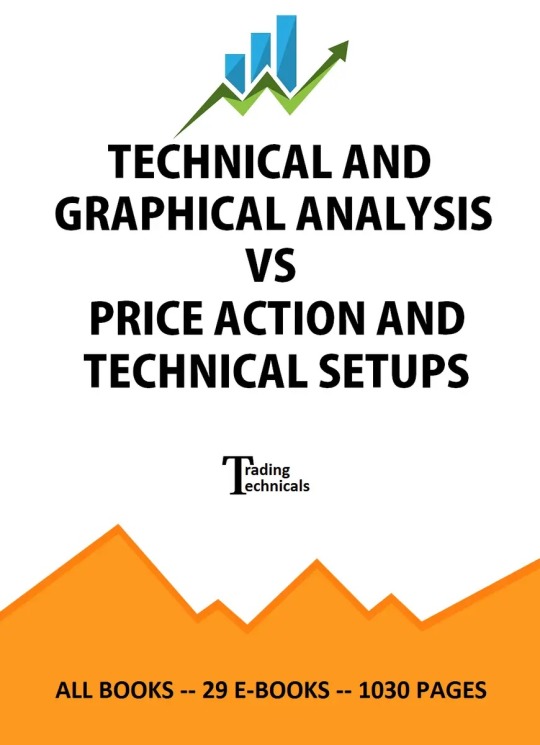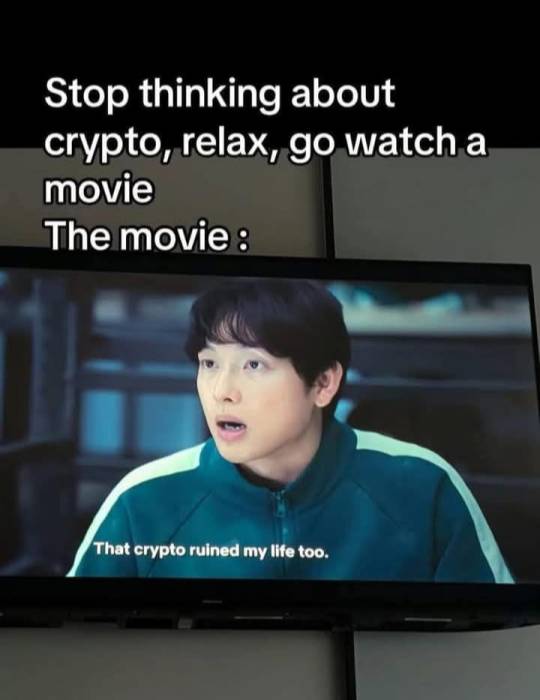#swingtrade
Explore tagged Tumblr posts
Text
Without Zero knowledge of option trading
Trading with a dream and zero strategy. 😂📈 Tag your partner in trading fails. Want to learn more? . . Taking Forward provides a 𝐅𝐫𝐞𝐞 𝐎𝐩𝐭𝐢𝐨𝐧𝐬 𝐓𝐫𝐚𝐝𝐢𝐧𝐠 𝐂𝐨𝐮𝐫𝐬𝐞. Visit our website 𝐰𝐰𝐰.𝐭𝐚𝐤𝐢𝐧𝐠𝐟𝐨𝐫𝐰𝐚𝐫𝐝.𝐜𝐨𝐦 watch the video, and start trading today. 🚀💸 Follow @takingforward Like , share 📲 comment 💬 . .
#stockmarketanalysis#stockmarketp#stockmarket#stockmarketgains#indianstockmarket#marketnews#stockmarketindia#intradaytrading#tradingstrategy#swingtrade#stockmarketeducationindia#bankniftystrategies#banknifty#explore#OptionsTrading#TradingBuddies#FreeTradingCourse#LearnToTrade#TakingForward#TradingJourney#virelmemes#trending#fyp#follow#instagram
0 notes
Text
Should I Swing Trade Or Day Trade As A Beginner?
Reference:https://makeinvestingcool.com/should-i-swing-trade-or-day-trade-as-a-beginner/
youtube
0 notes
Text
Exemplo de Painel Intuitivo do Didi Alert
O DIDI Alert é uma ferramenta essencial para traders que utilizam a estratégia das agulhadas do Didi Aguiar. Ele usa inteligência artificial para identificar automaticamente agulhadas, tendências e aberturas de bandas de Bollinger em até 300 gráficos simultaneamente.
Benefícios:
Agilidade: Analisa múltiplos gráficos em segundos.
Precisão: Usa a estratégia das agulhadas, reconhecida por sua eficácia.
Notificações: Alerta sobre oportunidades por som, push e e-mail.
Flexível: Funciona com quase todos os ativos e é personalizável.
Fácil: Configuração simples e intuitiva.
O DIDI Alert monitora mercados em busca de agulhadas e envia alertas.
Saiba mais no site https://atmsystems.com.br
#didiaguiar#agulhadasdodidi#mediamovelforex#adx#trix#forex#forextrader#forextrading#forexlifestyle#forextips#eurusd#bolsadevalores#btcusd#scalping#scalping_trading#goldusd#goldust#didialert#didiindex#didiindexindicador#daytrade#daytrader#daytraderbrasil#daytraderlifestyle#daytraderlife#swingtrade#swingtrader#swingtraderbrasil#analisetecnica#indicadores
0 notes
Text



Being invited into VIP by a swinger group and kissing a guys wife to bring in the new year was not on my bingo card but I’m definitely not complaining 😂👏🏻
Happy New Year you crazy animals 😘🖤
Ok love you bye.
#hot girl shit#don’t mind me#me#come and get it#bi girls#i like attention#big tiddy committee#big bootie#happy new year#bisexual#balloon#lonely hearts club#swingtrading#swingers
35 notes
·
View notes
Photo

>>>>>>FIBONACCI<<<<<<< #daytrader #swingtrader https://www.instagram.com/p/CoJUauJs6rY/?igshid=NGJjMDIxMWI=
3 notes
·
View notes
Photo

💥📈 Found a new swing for this week! This one is set to deliver 300-400% returns, guaranteed! 💰💪 Watch how we get paid on this swing and don’t miss out on the action! 🚀✨ #InvestSmart #StockMarket #Returns #SwingTrade #MoneyMoves #FinancialFreedom $SPY $SMCI $TSLA $CVNA $MSTR
0 notes
Video
youtube
🚀Swing Trading Strategy 🔥#05December #stockmarket #swingtrading
Title:
🚀 Swing Trading Strategy | Maximize Your Profits | @TeluguTraderAJ | 5th Dec 2024
Description:
Looking for the ultimate Swing Trading Strategy to dominate the stock market? In this video, @TeluguTraderAJ breaks down powerful tips and proven techniques for both beginners and seasoned traders. Whether you're into Nifty, Bank Nifty, or just getting started, this guide will help you stay ahead of the market and maximize your profits. 📈💹
👉 Watch Now: Swing Trading Strategy @TeluguTraderAJ 🔔 Don’t forget to like, share, and subscribe for more trading insights!
#Trading #StockMarket #SwingTrading #TeluguTraderAJ #Nifty #BankNifty #ProfitMaximization #TeluguTradingTips
0 notes
Text

Didi Alert - Detector Rastreador de Agulhadas da ATM Systems
O DIDI Alert é uma ferramenta essencial para traders que utilizam a estratégia das agulhadas do Didi Aguiar. Ele usa inteligência artificial para identificar automaticamente agulhadas, tendências e aberturas de bandas de Bollinger em até 300 gráficos simultaneamente.
Benefícios:
- Agilidade: Analisa múltiplos gráficos em segundos.
- Precisão: Usa a estratégia das agulhadas, reconhecida por sua eficácia.
- Notificações: Alerta sobre oportunidades por som, push e e-mail.
- Flexível: Funciona com quase todos os ativos e é personalizável.
- Fácil: Configuração simples e intuitiva.
O DIDI Alert monitora mercados em busca de agulhadas e envia alertas. Não é um robô, e a decisão de negociação é do usuário.
Saiba mais em nosso site https://atmsystems.com.br
#didiaguiar#agulhadasdodidi#mediamovelforex#adx#trix#forex#forextrader#forextrading#forexlifestyle#forextips#eurusd#bolsadevalores#btcusd#scalping#scalping_trading#goldusd#goldust#didialert#didiindex#didiindexindicador#daytrade#daytrader#daytraderbrasil#daytraderlifestyle#daytraderlife#swingtrade#swingtrader#swingtraderbrasil#analisetecnica#indicadores
0 notes
Text
Unlock Your Potential with These Timeless Philosophy Tips | #Motivation
Unlock Your Potential with These Timeless Philosophy Tips 💡 | #Motivation https://www.youtube.com/watch?v=riO83PIak0A "Unlock Your Potential with These Timeless Philosophy Tips 💡 | #Motivation" Description: "Your thoughts shape your reality—this isn’t just a saying; it’s a timeless truth. Inspired by the wisdom of philosophers like Epictetus and Nietzsche, this short video will empower you to face challenges, find your purpose, and stay motivated. 💪✨ 🧠 Learn how your mindset can transform your life. ☀️ Start each day with purpose and confidence. 🔔 Follow for more motivation and philosophical insights that inspire action! #Philosophy #Motivation #SelfGrowth #Mindset #Success #Nietzsche #Epictetus #InspirationalQuotes #Shorts" via Rise And Shine Daily https://www.youtube.com/channel/UCoGV1IZTNNwYNOHicdgnjJg January 21, 2025 at 11:00AM
#makemoneyonline#dividendinvesting#dividendstocks#swingtrading#optionselling#wheelstrategy#tradingtips#stockoptions#income
0 notes
Text

Choose the trading strategy that fits your style! 📊 Whether you're into the quick moves of day trading or prefer the calculated approach of swing trading, MintCFD has everything you need to trade with confidence.
Start trading smarter today!
#markettrend#forextrading#daytrading#swingtrading#technicalanalysis#forexmarket#tradingstrategy#investsmart#tradingtips#fxtrading#financialfreedom#forexlifestyle#wealthcreation#smartinvesting#forexeducation#globalmarkets#onlinetrading#tradewithconfidence#forexcommunity#investmentgoals#learntotrade#leverageyourknowledge#tradesmart#moneymindset#financialgrowth#MintCFD
0 notes
Text
What is a Stock Market?
The stock market is a financial marketplace where individuals, corporations, and institutions trade shares, representing ownership in a company. It serves as a platform for companies to raise capital for growth and for investors to build wealth by owning a piece of those companies. 📊💼
How the Stock Market Works
The stock market operates through exchanges like the New York Stock Exchange (NYSE) and Nasdaq. Companies list their shares on these exchanges via an Initial Public Offering (IPO), allowing the public to buy and sell shares. Once listed, shares are traded on the secondary market, where supply and demand determine prices.
When a company performs well or shows potential for growth, demand for its shares increases, driving up the price. On the other hand, poor performance or negative sentiment reduces demand, lowering the stock price. 📈📉
Key Components of the Stock Market
Stock Exchanges: Platforms where buying and selling take place, such as NYSE, Nasdaq, and London Stock Exchange. 🏛️
Investors and Traders:
Investors aim for long-term growth, holding stocks for years.
Traders focus on short-term price movements, buying and selling frequently. 🧑💼💰
Stock Indices: Indices like the S&P 500 and Dow Jones track the performance of specific groups of stocks, offering insights into market trends. 📊
Regulators: Organizations like the Securities and Exchange Commission (SEC) oversee and ensure fair trading practices. ⚖️
Types of Stock Markets
Primary Market: Where companies issue new shares to raise capital through IPOs. This is the first step for a company entering the stock market. 🚀
Secondary Market: After IPOs, stocks are traded between investors in the secondary market, where most trading occurs. 🔄
Benefits of the Stock Market
Capital for Companies: The stock market provides businesses with funding for growth and innovation. 💵
Investment Opportunities: It allows individuals to grow their wealth by investing in companies they believe in. 🌟
Wealth Generation: Long-term investments in the stock market can lead to significant financial gains. 💰📈
Economic Indicator: The stock market reflects the overall health of the economy. 🌍📊
Risks in the Stock Market
While the stock market offers opportunities, it comes with risks:
Volatility: Stock prices can fluctuate due to economic changes, market sentiment, or company-specific events. ⚡
Economic Risks: Factors like inflation, unemployment, or global crises can impact market performance. 🌐📉
Emotional Decisions: Fear and greed often lead investors to make poor financial choices. 🤔
Conclusion
The stock market is a cornerstone of the global economy, providing a platform for companies to raise funds and investors to achieve financial growth. 📈💼 However, it requires understanding its mechanisms and risks. By staying informed, setting clear goals, and practicing disciplined decision-making, individuals can harness the stock market's potential to build long-term wealth. 🌟
1 note
·
View note
Text
🚀 Excited to start building my swing positions with these tickers! 📈 🔍 Checking out: $BABA, $PDD, $NVDA, $AMD, $UNH, $UPST, $AAPL, $BKNG, $SNOW, $FSLR Let’s see where this journey takes us! 💪💰
0 notes
Text

Trading Technicals
This trading technicals ebook lays down...
Bullish Candlestick & Chart patterns Bearish Candlestick & Chart patterns What are Technical Indicators & Candlesticks? How to use Indicators like SMA, Pivot Points, RSI, etc. Bilateral Patterns that can go in either direction. How to draw Support and Resistance? Trade the bounce and the break Ratios, Entry Levels/Stoploss Multiple Price Action Strategy Different Breakouts & Price Outcomes Buying & Selling Opportunities Several Technical Setups
#tradingtechnicals#marketanalysis#technicalanalysis#chartpatterns#priceaction#tradingstrategies#forextrading#stockmarket#investmenttips#daytrading#swingtrading#tradingsignals#riskmanagement#markettrends#candlestickpatterns#tradingeducation#financialliteracy#technicalindicators#tradingcommunity#investsmart#ebook#book#pdf#guide#course
0 notes
Text
Enhance Your Trading Strategy with the Relative Vigor Index (RVI)
Ever feel like your trading strategy could use a little boost? Enter the Relative Vigor Index (RVI), a technical analysis tool that’s like a double shot of espresso for your trading game. Just as we tend to feel energized when things are on the up (or after a good coffee), asset prices typically close higher during uptrends. Let’s dive into how the RVI indicator can help you identify these momentum-packed market moves.
Read more: https://www.investchannels.com/boost-your-trading-strategy-with-the-relative-vigor-index-rvi/
What is the Relative Vigor Index (RVI)?
The Relative Vigor Index, or RVI, is a momentum oscillator that helps traders gauge the strength and direction of a market trend. It operates by comparing an asset’s closing price with its overall trading range and then smoothing this data with a simple moving average (SMA). The core idea behind the RVI is to capitalize on a common market behavior: during uptrends, prices tend to close higher than they open, and the opposite happens in downtrends. This characteristic makes the RVI a useful tool for traders seeking a clear view of the market’s momentum.

How Does the Relative Vigor Index (RVI) Work?
As traders analyze the RVI, they’ll notice its values increase as an uptrend builds. In this bullish setting, an asset’s closing price generally gravitates toward the top of its trading range, while the opening price sits closer to the bottom. Essentially, when markets are trending upwards, prices tend to close stronger than they opened; conversely, downtrends see prices weakening toward the end of the trading session.
Much like other oscillators, such as the Moving Average Convergence Divergence (MACD) or the Relative Strength Index (RSI), the RVI oscillates around a central line. Rather than tracking price movements directly, it rotates around this central point, which is often displayed separately beneath the main price chart. Understanding this nuance is essential for using the RVI effectively within a trading toolkit.
Building a Strategy with the Relative Vigor Index (RVI)
There are several methods traders can use with the RVI to understand market trends and identify potential entry points. Two of the most widely used techniques are spotting divergences and observing crossovers. Let’s explore each approach in more detail.
Divergence in the RVI
One of the primary functions of the RVI is to identify divergences, which happen when the RVI moves in one direction while the asset price moves in another. Such divergence can indicate a likely trend reversal in the direction of the RVI. For example, if an asset’s price is rising, but the RVI is falling, this could be a signal that a reversal is imminent.
As a leading indicator, the RVI often highlights possible trend changes before they appear on the price chart. When the RVI’s movement diverges from the asset’s price, it frequently serves as an early warning of a potential shift in trend. This divergence can offer traders an advantage by allowing them to adjust their strategies ahead of the curve.
RVI Crossovers
Another popular way to read the RVI is through crossovers, which occur when the RVI line crosses above or below its centerline. If the RVI line crosses above the centerline, it signals a potential uptrend, while crossing below suggests a possible downtrend. These crossovers serve as early indicators of where the price might move next, helping traders to position themselves accordingly.
Including the RVI in your trading arsenal can provide an added layer of insight into market momentum, helping you stay one step ahead of potential price moves. Whether you’re looking for divergences or following crossovers, the RVI provides key insights that can help refine your strategy and boost your confidence in navigating the markets.
Optimizing the Relative Vigor Index (RVI) Settings
To improve the RVI’s accuracy, traders might consider adjusting its timeframe settings. Extending the timeframe can help smooth out short-term fluctuations, enabling the RVI to capture the broader market trend more reliably. This adjustment allows the RVI to focus on the bigger picture, providing clearer signals by filtering out some of the short-term market noise.
If you’re trading on platforms like IQ Option, you can easily find and apply the RVI by going to the “Indicators” section, searching for ���Relative Vigor Index,” and adjusting settings directly on the price chart. Testing different configurations can help you find the setup that best aligns with your trading style and goals.
Relative Vigor Index (RVI) vs. Relative Strength Index (RSI)
Since both the RVI and RSI belong to the oscillator category, they share certain similarities. However, they serve distinct purposes and can provide traders with different insights, making it essential to know when to use each.
The RSI is primarily designed to identify overbought and oversold conditions, which helps traders recognize extreme market levels. The RVI, in contrast, focuses on the direction and momentum of the trend, offering clues about the current market sentiment—whether it’s bullish or bearish. While the RSI evaluates the trend’s strength, the RVI guides traders toward the prevailing sentiment, making it useful for capturing opportune moments to enter a trade.
Combining Indicators for a More Comprehensive Strategy
Many experienced traders enhance their strategies by combining several indicators to get a more comprehensive view of market behavior. By blending multiple tools, traders can achieve a clearer and more accurate reading, which helps them make informed trading decisions. For example, pairing the RVI with indicators like the RSI or MACD can reveal insights that may not be as apparent with just one tool.
Experimenting with different indicators can help you develop a toolkit that aligns with your trading approach. Whether you prefer to rely on the RVI, RSI, or a combination, taking the time to test different strategies can help you craft a unique approach that suits your specific goals and risk tolerance.
By exploring the Relative Vigor Index and integrating it into your trading strategy, you can unlock deeper insights into market momentum and potential reversals. With practice and patience, the RVI can become a valuable tool in your trading toolkit—empowering you to identify trend shifts, anticipate moves, and navigate the markets with greater precision and confidence.
#TradingStrategy#TechnicalAnalysis#ForexTrading#CryptoTrading#StockMarket#Forex#DayTrading#RelativeVigorIndex#RVI#TradingIndicators#MomentumIndicators#RVIIndicator#Oscillator#MarketAnalysis#PriceAction#TrendReversal#TradingSignals#ForexStrategy#CryptoAnalysis#SwingTrading#Investing#FinancialMarkets#StockAnalysis#CryptoInvesting#ForexCommunity#TradingTools#FinancialEducation
0 notes
Text
Top Crypto Trading Strategies to Maximize Your Profits
To maximize profits in crypto trading, implementing effective strategies is crucial. Here are three key strategies:
1. Day Trading: This involves buying and selling crypto assets within the same day, aiming to profit from short-term price fluctuations. Day traders rely heavily on technical analysis, charts, and market trends to make quick, informed decisions. Although it requires a deep understanding of the market and strong risk tolerance, day trading can yield high returns if managed carefully.
2. Swing Trading: Unlike day trading, swing trading focuses on capturing medium-term price movements over days or weeks. Swing traders analyze broader trends and price patterns, making this approach less time-sensitive than day trading. By holding onto assets during market swings, traders can potentially gain higher profits while minimizing transaction fees.
3. HODLing (Buy and Hold): This long-term strategy, often popular with beginners, involves purchasing promising cryptocurrencies and holding onto them, regardless of market volatility. The goal is to benefit from significant price appreciation over time. HODLing requires patience and resilience, as markets can fluctuate dramatically, but it’s a solid choice for investors with a long-term outlook.
Each strategy comes with its unique risks and rewards, and combining them can provide a balanced approach to growing your crypto portfolio.
#CryptoTrading#CryptoStrategies#DayTrading#SwingTrading#HODL#CryptoInvesting#CryptoMarket#ProfitMaximization#CryptoPortfolio#TradingTips#BlockchainInvesting#CryptoAssets#MarketTrends#InvestSmart#LongTermInvesting
0 notes
